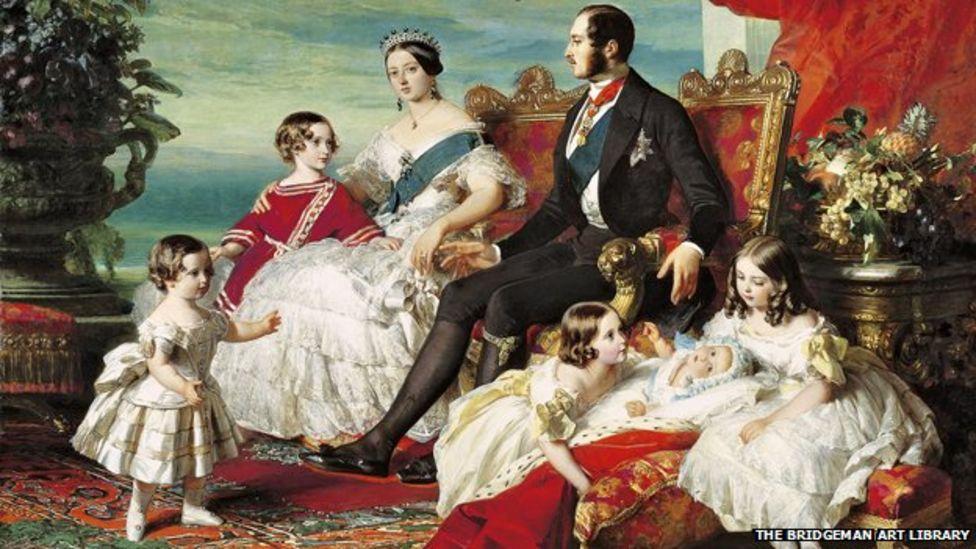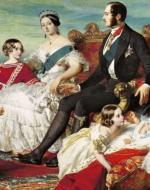Created by Savannah Pustay on Fri, 11/12/2021 - 13:24
Description:
This is a painting by Franz Xaver Winterhalter of Queen Victoria, Prince Albert, and five of their children. This painting demonstrates the ideology that became synonymous with Queen Victoria's reign. During the Victorian Era, there was a great emphasis on domestic bliss. The Victorian Era was a patriarchal society, with women thought to be best suited for domestic duties and caring for the children. Queen Victoria further perpetuated this ideology by exemplifying this dynamic in her marriage which she deferred many of the decisions of royal affairs to her husband. At this time in history, women were not viewed as independent sexual beings but were instead looked at as the "angels of the house" with their identity defined only as wife and mother. In a video for the British Library, Kathryn Hughes details how girls and young women were encouraged to study piano, dancing, and conversational french to make them more appealing for a future husband. Young women in Victorian society were educated, but in subjects that are solely for the purpose of making her more "marriageable". Queen Victoria's influence on the idea of a nuclear family with the women in a domestic role is the reason I chose this image of her and her family for this gallery. Robert Browning introduces us to Porphyria by having her come in and start on these domestic tasks like building a fire, which would have been expected of women during this time. However, later on, we see Porphyria initiate sexual contact which was considered inappropriate for women.
Hughes, Kathryn. “Gender In 19th Century Britain.” British Library, 19 Dec. 2014, www.bl.uk/romantics-and-victorians/videos/gender-in-19th-century-britain.
Copyright:
Associated Place(s)
Part of Group:
Featured in Exhibit:
Artist:
- Franz Xaver Winterhalter


